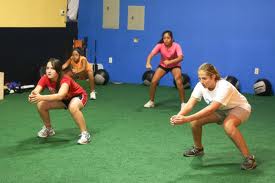
Functional Restoration Reduces Rehabilitation Times After ACL Repair
For years there has been considerable controversy as to why "Russian Stimulation" or what is referred to as "Dr. Kots" type stimulation increases muscle bulk and strength in athletes. There has been very little documented, peer reviewed study on what has become and, is becoming, a new aspect of rehabilitation medicine. For an actual acl case study of the timeline to recover of the author's daughter go here - 98 days.
Let's take a specific type injury, ACL surgery to repair, replace or transplant ligament. Generally speaking most people anticipate a very long time period of discomfort, weakness and limited range of motion, based upon the historical methods of treating anterior cruciate ligament repair or replacments ( hence ACL). Many injured anticipate 8 - 9 months minimum, however more realistic today is 8- 9 weeks. In the medical community the treatment is for tissue damage, whereas in the athletic world they have taken well conditoned athletes and improved their performance using treatments that complement rehabilitation procedures. The athletic trainer tries to increase muscle strength, torque, quickness for winning competitons. Following ACL repairs the same concepts are needed.
Here is a simplfied version of what is going on when functional restoration electrotherapy is used in both of the above situations.
The natural movement in our body is to enlist the smaller diameter muscle fibers first, followed by recruiting the larger diameter muscle fibers last. The coordinated recruitment provides us with a smooth movement, not a jerky non functioning movement. With the use of functional electrical stimulation we do the exact opposite. With external sources of electricity the first fibers to fire are the larger diameter fibers. If the electrical current from the electric stimulation machine is high then after recruiting the larger diameter motor nerves then the smaller diameter nerves are recruited. The effect is to have more motor fibers recruited using functional stimulation and volitional exercises than one would have with solely volitional exercising.
The decreased time period to restore strength and full range of motion is reduced because of the electro stimulation actually stimulating more motor nerves. The use of functional electrical restoration can not stand alone by itself as being beneficial, unless the patient actually is willing to do the exercises, including the painful process to restore full range of motion. It's a given that without pain there is no gain, however pain will always be there whether one exercises or not. If not the pain is there, except it is extended for longer periods of time. With a cooperative patient doing the exercises and using functional electrical stimlation there is pain as one gains but the time period is cut by 30 - 70%. Worth the effort. See video.


